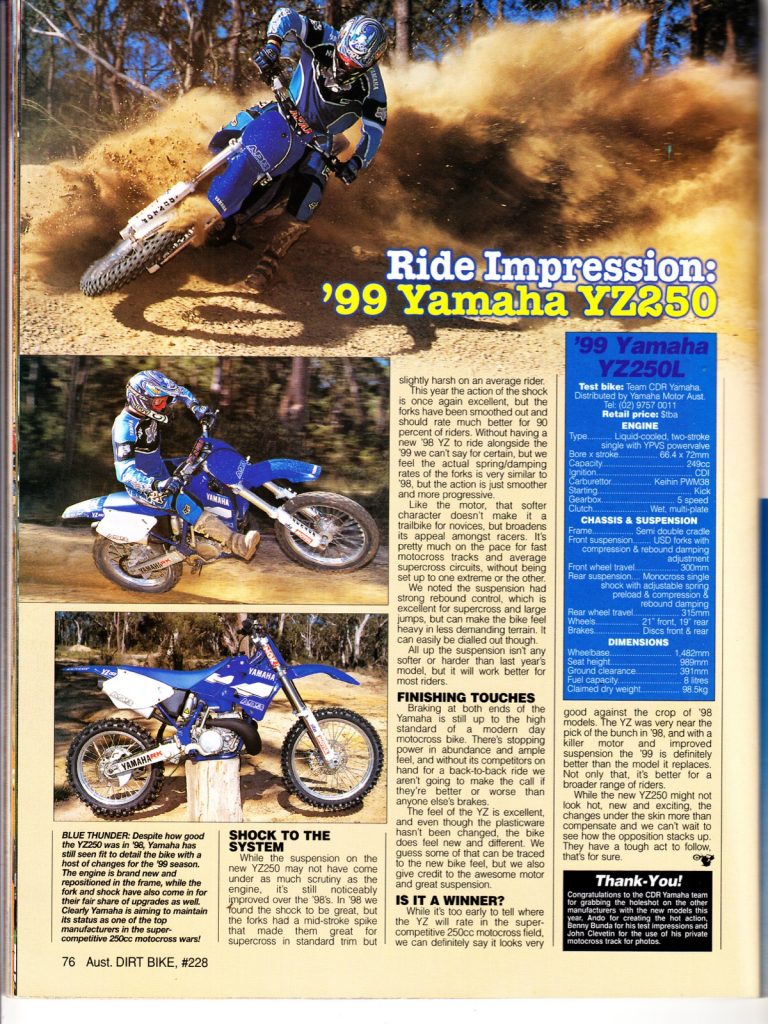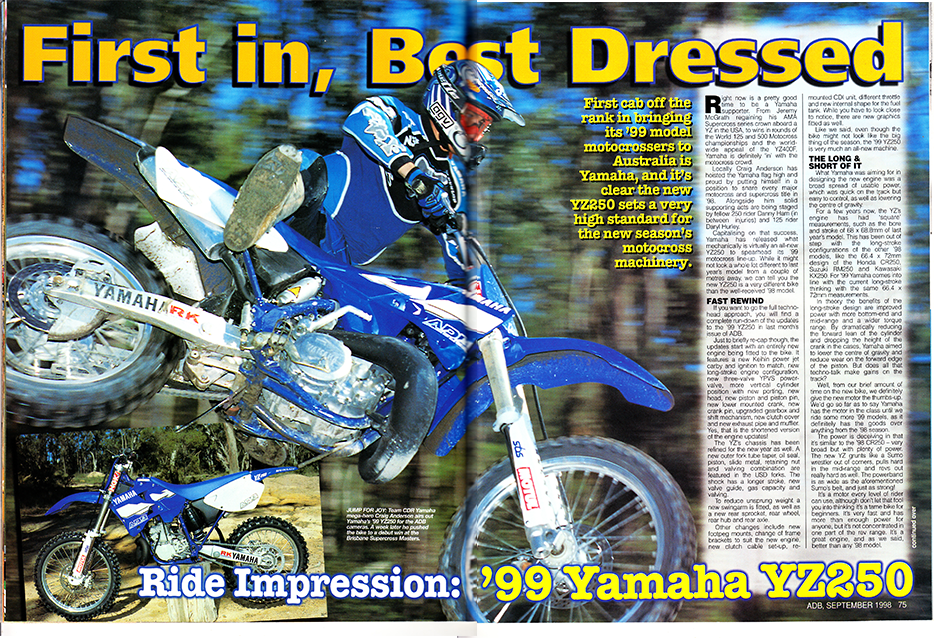The engine featured a Keihin PWM38 Powerjet carburettor with ignition to suit, a new long-stoke configuration (66.4 x 72mm from 68 x 68.8mm), a new YPVS exhaust power valve, a more vertical cylinder with revised porting, new cylinder head to suit the narrower bore, piston and piston pin, a lower crank with new crankpin, an upgraded gearbox and shift mechanism, new clutch cover, exhaust pipe and muffler, plus many more details not specified.
The frame also received updates, as did the Kayaba suspension with many internal changes to the upside down fork, such as valving, pistons, oil seals and retaining nuts. The rear got a longer-stroke shock absorber with new valving and gas capacity.
To reduce unsprung weight, a new swingarm, sprocket, hub and axle were fitted.
With all these changes, Yamaha was aiming for a broad spread of useable power and a lower centre of gravity.
THE BRAKES
The long-stroke engine, in theory, gave benefits in improved bottom-end and mid-range power plus a wider torque band.
To quote the test: “The new YZ grunts like a sumo wrestler out of corners, pulls hard in the mid-range and revs out really hard as well.
“The powerband is as wide as the aforementioned sumo wrestler’s belt, and just as strong!”
The test went on to deny that the bike was a tame mount best suited to beginners, stating that it was very fast with more than enough power for anyone.
The ’98 model was known for having a great shock but a fork with a mid-stroke spike that was fine for supercross but harsh on an average rider. For ’99 the fork had been smoothed out.
Our testers decided that the new suspension was pretty much on the pace for fast motocross tracks and average supercross tracks without being set up for one extreme or the other. The brakes had stopping power in abundance with ample feel but, without back-to-back comparisons, the call couldn’t be made if they were better or worse than the opposition’s.
The YZ250 sported a 21/19” wheelset, five-speed gearbox and an 8.0 litre tank. Suspension travel was 300/315mm front/rear with compression and rebound damping adjustment at each end plus spring preload on the Monocross shock. Claimed dry weight was 98.5kg with a wheelbase of 1482mm, seat height of 989mm and ground clearance of 391mm. Heritage Editor Warren Jack











